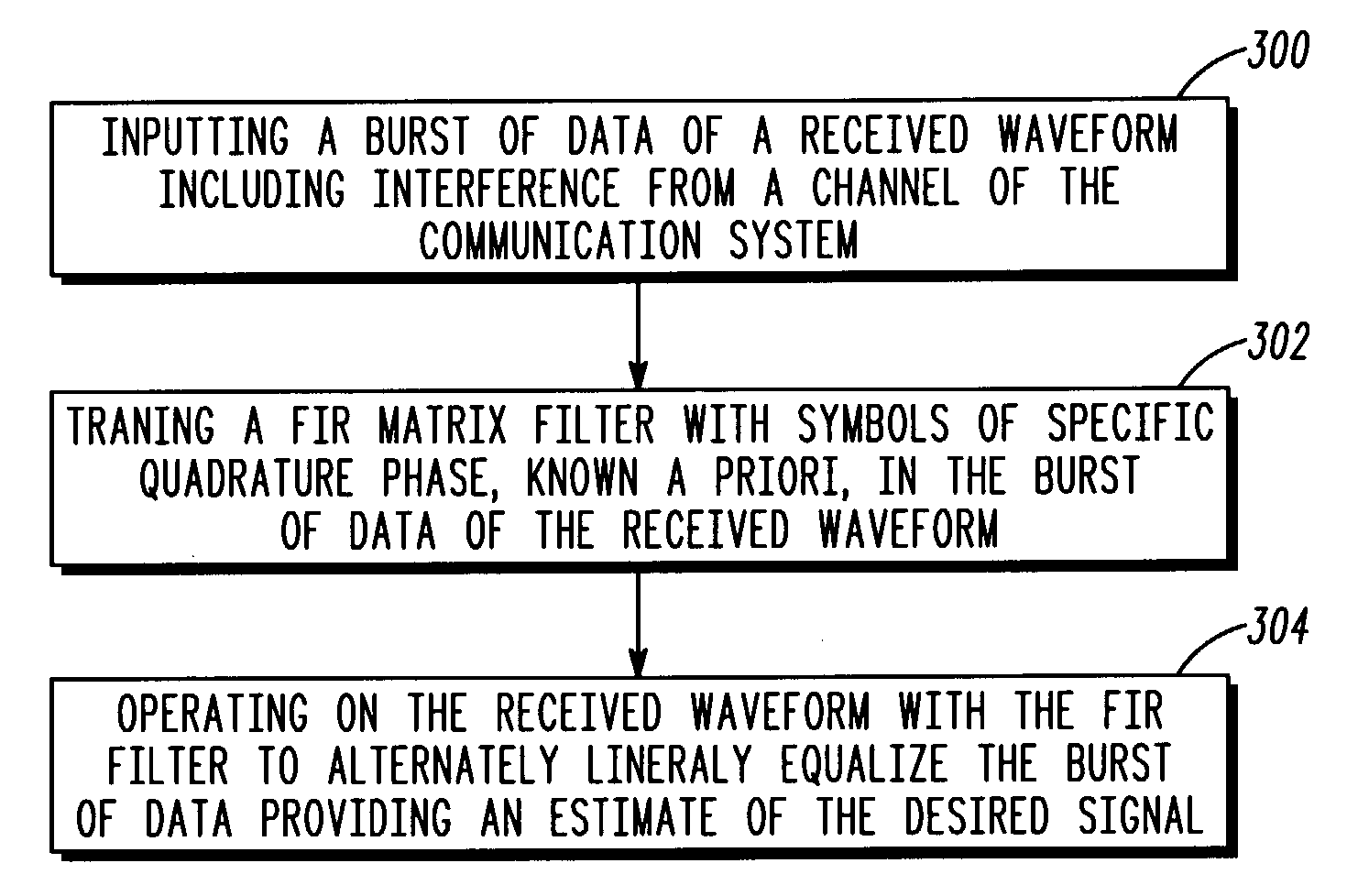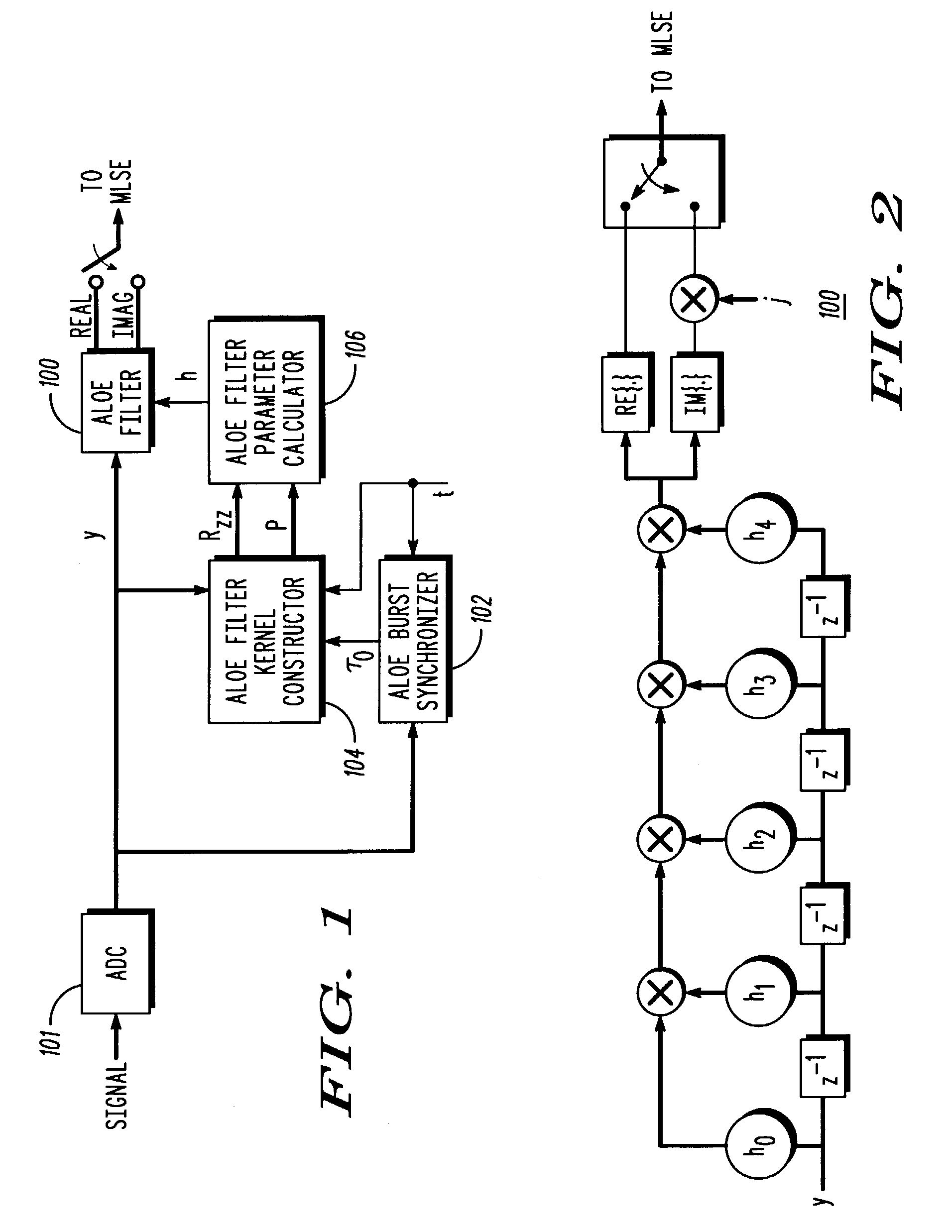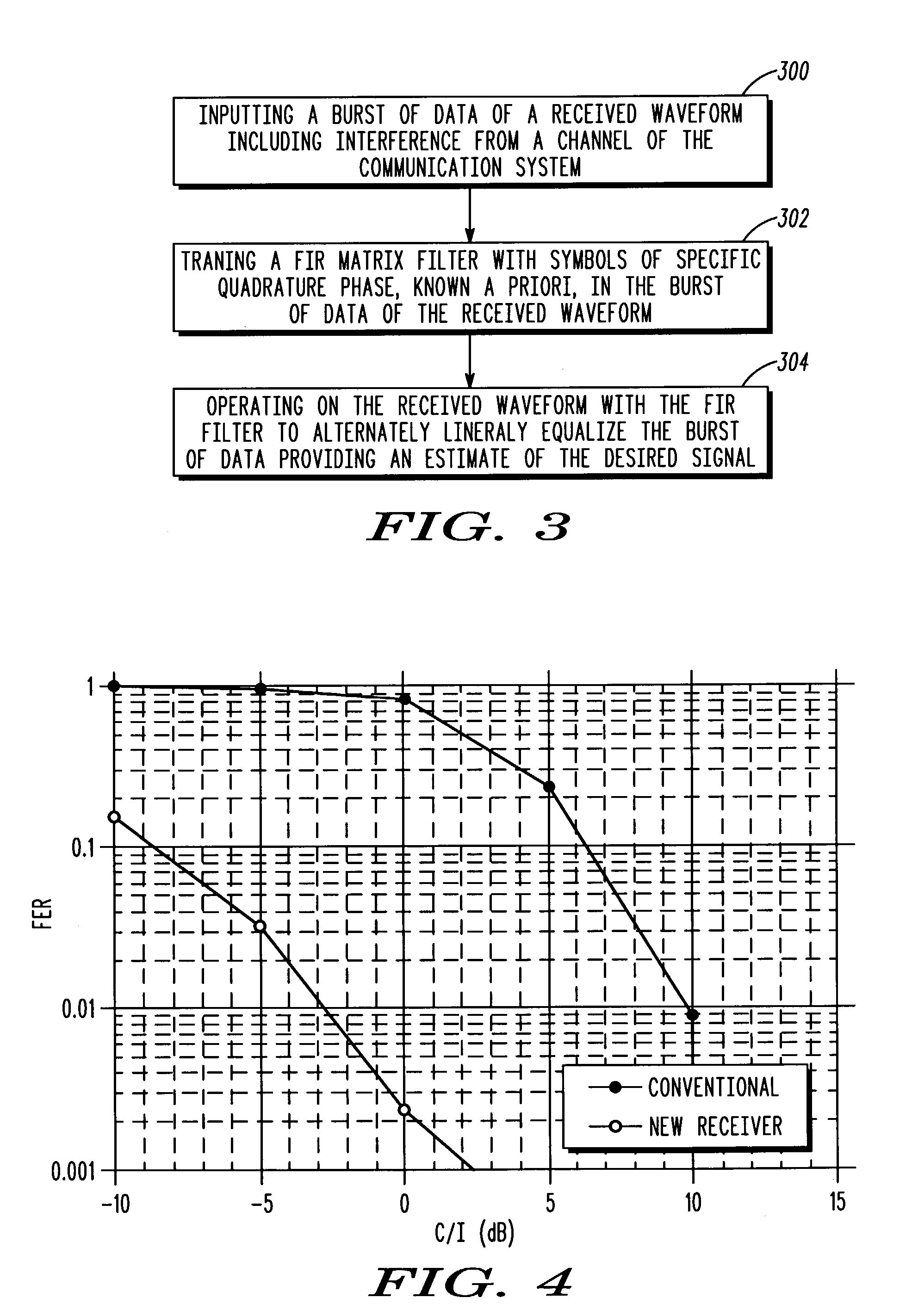Reducing interference in a GSM communication system
a communication system and receiver technology, applied in the field of communication systems, can solve the problems of interference with the proper transmission and reception of voice and data signals, major source of noise experienced by gsm communication devices, and reduced capacity
- Summary
- Abstract
- Description
- Claims
- Application Information
AI Technical Summary
Benefits of technology
Problems solved by technology
Method used
Image
Examples
example
[0035]A numerical simulation was performed using equalization, in accordance with the present invention. The results are provided below. Simulation data represents a single GMSK interferer synchronized with a user of interest in a typical urban environment (TU3 IFH), 3 kilometers per hour, ideal frequency hopping, AMR at 12.2 kbps, as specified in known ETSI standards. A frame error rate was calculated for several carrier-to-interference ratios.
[0036]FIG. 4 shows a graph of the results indicating frame-error-rate (FER) versus C / I (carrier / interference ratio) in an operating environment as specified above. A conventional receiver (conventional MLSE Viterbi equalizer) is compared to a receiver incorporating the present invention. As can be seen, the present invention provides much improved frame error rate (shown as the lower curve) the prior art conventional receiver (shown as the upper curve). In addition, this is accomplished with much fewer calculations as described previously.
[00...
PUM
 Login to View More
Login to View More Abstract
Description
Claims
Application Information
 Login to View More
Login to View More - R&D
- Intellectual Property
- Life Sciences
- Materials
- Tech Scout
- Unparalleled Data Quality
- Higher Quality Content
- 60% Fewer Hallucinations
Browse by: Latest US Patents, China's latest patents, Technical Efficacy Thesaurus, Application Domain, Technology Topic, Popular Technical Reports.
© 2025 PatSnap. All rights reserved.Legal|Privacy policy|Modern Slavery Act Transparency Statement|Sitemap|About US| Contact US: help@patsnap.com



